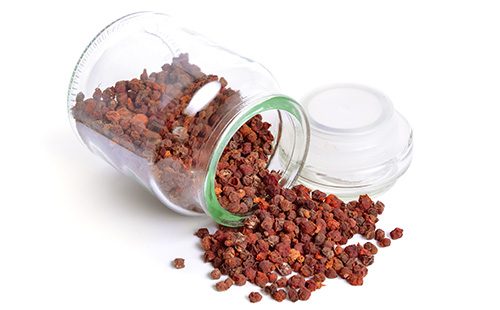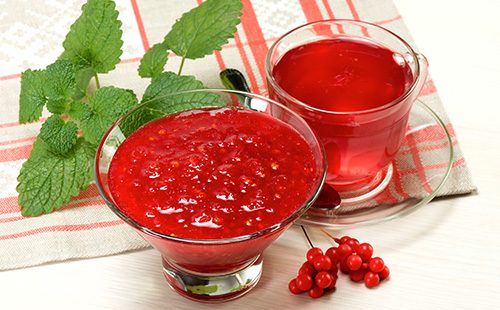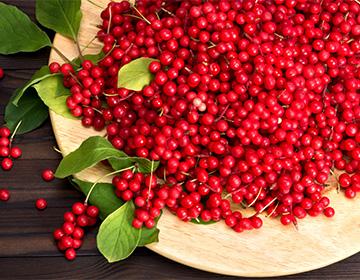The content of the article
The second name of the healing plant is Far Eastern lemongrass. It was already given by domestic botanists who discovered dense thickets on Sakhalin Island and in other regions of the Far Eastern Territory.
Botanical characteristic
The plant is a weaving tree-like vine. Prefers fertile soils, as well as sunny areas. Very often forms creeping and creeping thickets in places of cut down or burned forests. Liana is very strong - she wraps around powerful tree trunks in a spiral. Sometimes it is embedded in the structure of branches and can even cause the death of a braided plant. Morphological characteristics are as follows.
- The stalks. Strong and elastic, grow quickly. They reach a length of 15 m. Old shoots are covered with rough and rough (often cracked) brown bark. Young - have a smooth shiny surface of a yellowish tint.
- Leaves. They are arranged alternately, and on short shoots - in bunches. They have a rich green color. The leaf plate is wide-lanceolate or oval, pointed at the end. Edge - with rare teeth. Petioles are reddish.
- Flowers. Mounted with long pedicels in the axils of the leaves, three to five pieces. They have a delicate pleasant aroma. Corolla reaches 2 cm in diameter. The color at the beginning of flowering is pink, then turns white. Fading flowers are yellow. Flowering begins in the second half of May, lasts until mid-June.
- Fruit. Ripen in September and October. They are juicy multi-leaves - about 20 berries are concentrated in a bunch around a single axis. The length of the clusters sometimes exceeds 10 cm. Inside the loose pulp of the fruit there are seeds of a dark brown color.
Harvesting raw materials
The benefits of lemongrass are concentrated in its fruits and seeds. They are harvested for subsequent use for medicinal purposes. Only fully ripe berries, the color of which has become rich red or orange-red, are subject to collection.
- Collection. Ripe (but not overripe) berries are harvested directly from the vines with brushes. It is important not to damage the plant itself and its support. Better cut the clusters with a knife or pruner.
- Training. The raw materials are laid out in a thin layer on a tarpaulin, fabric or paper. Thoroughly sorted out for impurities and spoiled parts. They are ruthlessly removed, since one rotten fruit can spoil all stocks.
- Drying. The brushes are laid out in a single layer with good ventilation under a canopy or dried in a dryer at a temperature of 40 ° C. The readiness of the fruit speaks of their hardness.
- Storage. Dried lemongrass is stored for no more than three years in a tightly closed container to prevent moisture penetration and volatilization of the essential oil.
Seeds are stored for the pharmaceutical industry, since it is in them that the maximum concentrations of stimulants are found. To get them, they take only fresh fruits. Knead, squeeze the juice. (It is used for the preparation of fruit drinks, compotes, various tonic drinks). The cake is washed several times to separate the pulp and seeds. Seeds remove moisture residues in the open air, and then dry in dryers at 50 ° C.
It is believed that the fruits give a softer and more predictable therapeutic effect than seeds. In various packaging berries can be purchased at the pharmacy.
Composition
The beneficial properties of Schisandra chinensis are due to its complex biologically active composition.
- Lignans. They lower cholesterol, accelerate metabolic processes, prevent oxygen starvation of tissues, normalize the central nervous system, establish hormonal levels, and have antitumor properties.
- Essential oil. It accelerates tissue regeneration, normalizes microflora, eliminates pathogenic microorganisms, increases appetite, enhances the secretion of the gastrointestinal glands, and stimulates the immune system.
- Vitamin C. It normalizes the work of the adrenal glands, stimulates the immune system, establishes the process of cellular respiration, and regulates the permeability of capillaries.
- Organic acids. They have antibacterial properties, facilitate the release of sputum from the lungs, stimulate metabolism, increase the body's resistance, normalize the process of hematopoiesis.
- Tannins. They accelerate the healing of the epithelium, have astringent properties, eliminate the inflammatory process, act envelopingly, and cleanse the body.
- Fixed oils. Normalize blood viscosity, lower cholesterol, strengthen immunity, participate in the synthesis of hormones, regulate lipid metabolism.
- Resins Act as antiseptics, improve intestinal motility, relieve inflammation, contain anti-cancer compounds.
The composition of the fruits of the plant includes many mineral compounds. Among them are such important as:
- copper;
- iron;
- cobalt;
- sodium;
- potassium;
- phosphorus;
- zinc;
- selenium.
In addition to ascorbic acid, magnolia vine contains other vitamins. High concentrations of tocopherol andB vitamins. This explains the positive effect of the plant on the state of the reproductive organs, as well as its ability to establish metabolic processes and promote weight loss.
The tonic and adaptogenic effects of the imperial berry are determined by the content of the body's natural stimulants - schizandrin and schizandrol. These compounds are specific, and their effect on the body is unique. They increase physical and mental activity, endurance, provide resistance to stress and increased stress.
Healing properties
The plant is used for a variety of therapeutic purposes. High concentrations of antioxidants help protect the body from oncology, premature aging, and chronic diseases.
Tonic
The tonic properties of the plant are manifested not only by the elimination of drowsiness. It also fights apathy, loss of strength, chronic fatigue, lethargy, and malaise after illness. Culture-based products can improve the patient's psycho-emotional state - increase mood, cause a surge of vigor, eliminate depression, nervousness, asthenia.
Schisandra stimulates breathing, providing blood oxygenation and its delivery to all tissues and organs. Also, its preparations increase the activity of smooth and striated muscle tissue. This affects the level of physical activity of the patient. Toning blood vessels, phyto-drug improves coronary and peripheral circulation.
Prevention
The prophylactic use of berries is appropriate before the cold - the traditional season of colds. Gently stimulating the immune system, the plant increases the body's resistance to infectious pathogens. Even if a person is already sick, it will protect against complications and accelerate recovery.
Antioxidants in the composition of fruits and seeds can prevent the appearance of atypical cells in the body, the development of malignant and benign tumors. In some cases, lemongrass is used in the complex treatment of these diseases, however, the conditions and regimen must be agreed with the doctor.
Pressure problems
There is still debate about how culture affects blood pressure - it raises or lowers them. In folk and eastern medicine there is an opinion that the plant acts on the power of blood flow as a regulator. That is, it brings pressure back to normal, regardless of the initial values. Doctors say that lemongrass is a strong stimulant, therefore it has only a hypertensive effect. In this regard, hypertension is a contraindication of phytomedicine. But it is used to treat vegetovascular dystonia (VVD) with a predominance of hypotonic symptoms.
It is believed that the plant improves the functioning of the entire cardiovascular system. In addition to the action on the vessels, it positively affects the condition and productivity of the myocardium, ensures its proper oxygen supply and prevents the development of heart failure.
Skin diseases
The fruits are rich in antiseptic and regenerating components. Due to this, the plant is used in the treatment of a variety of skin diseases. Among them:
- psoriasis;
- eczema;
- abscesses;
- festering wounds;
- trophic ulcers;
- pustular rash;
- fungal lesions.
For cosmetic purposes, lemongrass oil is used. It is endowed with antiseptic, anti-inflammatory, anti-aging and moisturizing properties. Hood normalizes turgor, struggling with age-related changes. Regular internal use of herbal remedies also helps to maintain the attractiveness of hair and skin.
Male and female problems
Schisandra is used in eastern medicine to treat impotence arising from a background of nervous disorders. Increasing tone and activity, the plant prevents the extinction of sexual functions, retains the ability to bear children. It is precisely for these properties that the ruling persons of Ancient China particularly appreciated it.
For women, the plant is also useful. It normalizes hormonal levels, prevents the onset of PMS symptoms, and protects against early menopause and accelerated aging. Even after menopause, lemongrass will do good. There is a practice of treating infertility and inflammatory gynecological diseases with its help.But this approach should be agreed with the doctor.

Pharmacy Overview
In addition to raw materials, pharmacies sell ready-made medicinal products from the plant.
- Pills. Based on extract. Act as a mild tonic. Assign one or two tablets up to three times a day for a month. It is preferable to drink the drug in the morning.
- Syrup. In addition to lemongrass, it contains wild rose and ascorbic acid. It is taken as a stimulant of immunity. To speed up recovery, they drink two tablespoons of the drug once a day. For prevention - a tablespoon.
- Powder. It is made from the fruits of culture. Used to tone and strengthen the body. Accepted in dry form or used for the preparation of extracts.
- Tincture. This is an alcohol extract from the seeds. It treats asthenic conditions. Take 25 drops up to three times a day. The course is no longer than one month.
- Herbal teas. Contain in the composition and other plants. Used for general strengthening of the body, increase immunity, improve vision. Brew one or two packets, drink up to three times a day.
Prescription Drugs
At home, water and alcohol extracts are prepared from raw materials. They provide the intake of biologically active compounds from the fruit. They are not inferior in effectiveness to pharmacy products.
Infusion
Features Used to enhance immunity, as well as the prevention of seasonal loss of strength and depression.
Preparation and use
- A tablespoon of berries is placed in a metal container, pour a glass of boiling water.
- Cover the container with a lid, wrap it with a towel, leave for an hour.
- Filter the hood.
- Take a tablespoon three times a day.
Decoction
Features Used to treat skin diseases, as well as in the form of a tonic for mature and problem skin.
Preparation and use
- A tablespoon of dried fruit is poured with a glass of boiling water.
- Put the container on fire, boil for five minutes.
- After cooling, filter.
- Use as compresses on wounds and rashes, wipe the skin several times a day.
Tincture
Features It is used to increase vitality, eliminate VSD, accelerate metabolism and strengthen immunity.
Preparation and use
- Two tablespoons of the raw material are poured into a brewing vessel.
- Pour berries 150 ml of pure high-quality vodka.
- The vessel is tightly corked, left in a dark and warm place for two weeks.
- After filtering, take 30 drops up to three times a day for a month.
Compote
Features According to this recipe, you can prepare for the winter a delicious healing drink with a natural tonic effect.
Preparation and use
- Fresh fruits are sorted, cleaned from the stalks and washed with cool running water.
- The raw materials are put in half-liter jars, filling them by 2/3.
- Pour the raw material with boiling syrup (a mixture of sugar and water in equal amounts).
- Pasteurize in the oven for a quarter of an hour, and then roll up the lids.
- The resulting compote is added to tea or diluted with water to taste.
Contraindications
As a stimulant of the nervous system, lemongrass Chinese is contraindicated in case of increased excitability, psychoneurotic disorders, tendency to convulsions and epilepsy. The tool increases pressure, and therefore is prohibited in heart failure, hypertension, angina pectoris, weakness and fragility of blood vessels. You can not use herbal medicine in pregnant, lactating and children under 12 years old.It is forbidden to use infectious diseases in the acute period, at elevated body temperature, as well as for serious gastrointestinal pathologies (for example, with ulcers and intestinal obstruction).
Do not exceed the recommended dose. This increases the risk of side effects:
- increased heart rate;
- dizziness;
- nausea;
- increase in pressure;
- insomnia;
- increased secretory activity of the stomach.
Allergic reactions are provoked extremely rarely.
The results are noticeable after the first dose. Alcohol extracts begin to “work” after 30 minutes, and a surge of strength lasts up to six hours. With regular course use, the effect accumulates, and the patient notices an increase in working capacity and productivity in the long term. The course of treatment lasts a month, it can be repeated no more than four times a year.

Reviews: “Invigorates, but then I can’t fall asleep”
About pressure and tonic properties, this is a very deep and separate topic. I think that a person even with normal pressure will be in good shape for a long time after 3-4 teaspoons of vitamin. by the way, I worked at night. when in his distant student days he did term papers at night (coffee does not guess compared to lemongrass). This vitamin is not bad with soda ...
Argunov, http://forum.vinograd.info/archive/index.php?t-1365.html
Many times I heard from friends about the wonderful properties of lemongrass tincture, and also wanted to try it in the spring, during the season of vitamin deficiency and loss of strength. Moreover, I have indications: a tendency to hypotension, psycho-emotional stress (working as a teacher), fatigue. The fact that tincture does not suit me, I realized in a few days: the tincture really invigorates, but after taking the drops, my pulse begins to roll off the clock, I can’t fall asleep at night for a long time, and my sleep is restless. I had to refuse to take tinctures.
Kira https://dachadizain.ru/konservaciya/lekarstvennye/primenenie-nastojki-limonnika.html

